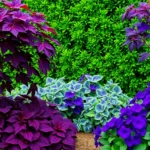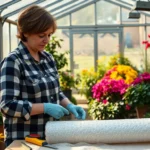Strong winds can turn our beautiful gardens into battlegrounds leaving plants damaged and outdoor spaces unusable. We’ve all watched helplessly as gusts topple prized flowers bend young trees and create uncomfortable conditions that keep us indoors when we’d rather be enjoying our outdoor oasis.
That’s where strategic windbreaks come to the rescue. These natural and artificial barriers don’t just protect our plants – they transform our entire garden experience by creating calm microclimates that extend growing seasons and make outdoor living infinitely more pleasant.
We’ll explore proven windbreak answers that work for gardens of every size and budget. From fast-growing hedge options to creative fence designs and innovative living walls you’ll discover how to shield your space while adding beauty and functionality to your industry.
Natural Living Fence Windbreak Ideas
Living fences offer the perfect blend of beauty and functionality for garden wind protection. These natural barriers grow stronger over time while creating stunning visual elements in our outdoor spaces.
Evergreen Hedge Barriers
Arborvitae hedges create dense year round protection that blocks wind speeds by up to 50% within a 10 foot radius. These fast growing conifers reach 6 to 8 feet in just 3 to 5 years and maintain their thick foliage through winter months. We recommend planting them 3 to 4 feet apart for optimal coverage.
Leyland cypress establishes quickly as a windbreak option that tolerates various soil conditions. This evergreen grows 3 to 4 feet annually and creates an impenetrable barrier reaching 15 to 20 feet at maturity. The dense branching pattern effectively filters strong gusts while providing privacy year round.
Boxwood varieties work exceptionally well for shorter windbreak applications in formal garden settings. These compact evergreens maintain their shape naturally and grow slowly to heights between 4 to 6 feet. English boxwood and American boxwood both offer excellent wind resistance while requiring minimal maintenance.
Deciduous Tree Windbreaks
Willow trees develop rapidly into effective seasonal windbreaks that filter air currents during growing months. These moisture loving trees can gain 6 to 8 feet of height annually and create natural wind tunnels that redirect harsh gusts. Weeping willows and pussy willows both establish robust root systems within 2 years.
Poplar species provide tall windbreak answers that mature quickly in most climate zones. These deciduous trees reach 40 to 60 feet at full size and create substantial barriers during spring through fall seasons. Lombardy poplars grow in narrow columns while hybrid poplars spread wider for broader protection.
Maple windbreak plantings offer seasonal protection combined with stunning fall color displays. Sugar maples and red maples both develop strong branching structures that deflect wind effectively. These native trees adapt well to various soil types and provide 20 to 30 years of reliable wind protection.
Mixed Shrub Plantings
Layered shrub combinations create multi level wind barriers that filter air at different heights throughout the garden. We plant taller specimens like forsythia and lilac in back rows with medium shrubs like spirea and viburnum in middle positions. Lower growing options such as barberry and potentilla fill front spaces for complete coverage.
Native shrub windbreaks establish quickly while supporting local wildlife and requiring less water than exotic species. Elderberry and serviceberry create upper canopy protection while native roses and sumac fill middle layers. These regional plants adapt naturally to local wind patterns and soil conditions.
Flowering shrub barriers provide wind protection while adding seasonal color and fragrance to garden spaces. Butterfly bush and weigela bloom throughout summer months while maintaining dense growth habits. Mock orange and beauty bush create spring flowering displays that transition into effective summer windbreaks.
Temporary Windbreak Solutions for New Gardens

When we’re establishing new gardens or need immediate wind protection, temporary answers offer flexibility and quick installation. These options let us protect vulnerable plants while permanent windbreaks develop.
Burlap Screen Installations
Installing burlap screens creates an effective natural windbreak that’s both biodegradable and budget friendly. We can mount these screens on wooden stakes or existing fence structures to block harsh winds while maintaining airflow. The porous fabric allows some air circulation, preventing the wind tunneling effect that solid barriers create.
Setting up burlap windbreaks requires minimal tools and expertise. We simply attach the screening to frames or stretch it between posts using zip ties or staples. The natural fiber material blends seamlessly with garden aesthetics while providing essential protection for tender seedlings and newly transplanted plants.
Portable Fabric Wind Barriers
Fabric barriers offer ultimate flexibility for changing garden needs and seasonal adjustments. Clear vinyl tarps made from robust waterproof materials provide excellent wind protection while allowing light to penetrate. These barriers work exceptionally well on patios and around container gardens where we need targeted protection.
Moving fabric windbreaks takes just minutes, making them perfect for rental properties or experimental garden layouts. We can fold and store these barriers during calm periods, then quickly deploy them when weather conditions deteriorate. The reasonable pricing makes fabric barriers an accessible option for gardeners working with limited budgets.
Bamboo Roll Windbreaks
Bamboo rolls combine durability with eco friendly materials to create attractive temporary windbreaks. We can position these natural screens around garden beds, along property lines, or against existing fences for added protection. The bamboo construction withstands various weather conditions while maintaining its structural integrity season after season.
Securing bamboo windbreaks involves anchoring the rolls to stakes or attaching them to fence posts using weather resistant ties. The natural appearance complements both modern and traditional garden designs, providing wind protection without compromising visual appeal. These rolls filter wind effectively while creating defined garden spaces and privacy screens.
Permanent Structural Windbreak Ideas

When we’re ready to invest in long-term wind protection, permanent structural windbreaks offer the most reliable and durable answers for our gardens.
Wooden Fence Windbreaks
Solid wooden fences create some of the most effective wind barriers available to gardeners. We can choose from cedar, redwood, or pressure-treated lumber to build fences that block harsh winds while adding privacy to our outdoor spaces. Board-on-board designs work particularly well because they eliminate gaps that allow wind to sneak through.
Installing wooden windbreaks along the perimeter of our garden beds provides immediate protection for vulnerable plants. We’ll want to anchor these fences securely with concrete footings to withstand strong gusts. Adding shrubs or climbing vines along the fence line increases the overall wind-blocking density while softening the harsh appearance of solid wood.
Maintenance becomes simpler when we apply weather-resistant stains or sealers every few years. This preserves the wood and extends the fence’s lifespan significantly.
Stone Wall Wind Barriers
Stone walls deliver unmatched durability and wind-blocking power due to their exceptional density and weight. We can construct these barriers using natural fieldstone, manufactured blocks, or stacked stone veneer depending on our budget and aesthetic preferences. Mortared stone walls provide the strongest wind protection, while dry-stacked walls offer better drainage and a more rustic appearance.
Building stone windbreaks requires careful foundation preparation to prevent settling and cracking over time. We should excavate below the frost line and create a gravel base for optimal stability. The wall’s height and thickness directly impact its effectiveness, with taller and thicker barriers offering superior wind protection.
Stone walls work exceptionally well in formal garden designs and complement Mediterranean or cottage-style landscapes. We can incorporate planting pockets within the wall structure to add visual interest and support beneficial insects.
Trellis and Screen Combinations
Combining trellises with screens creates porous windbreaks that reduce wind speed while maintaining airflow through our gardens. We achieve the best results by pairing sturdy wooden or metal trellises with climbing plants like clematis, honeysuckle, or grape vines. This approach allows some wind to pass through while still providing important protection.
Screened panels made from materials like bamboo, reed fencing, or decorative metal work beautifully in contemporary garden settings. We can adjust the density of these screens based on our exact wind protection needs. Mesh screens with 50% porosity typically provide the ideal balance between wind reduction and air circulation.
Installing these combination windbreaks requires positioning them perpendicular to prevailing wind directions for maximum effectiveness. We’ll need sturdy posts set in concrete to support both the trellis structure and the weight of mature climbing plants.
Creative DIY Windbreak Projects
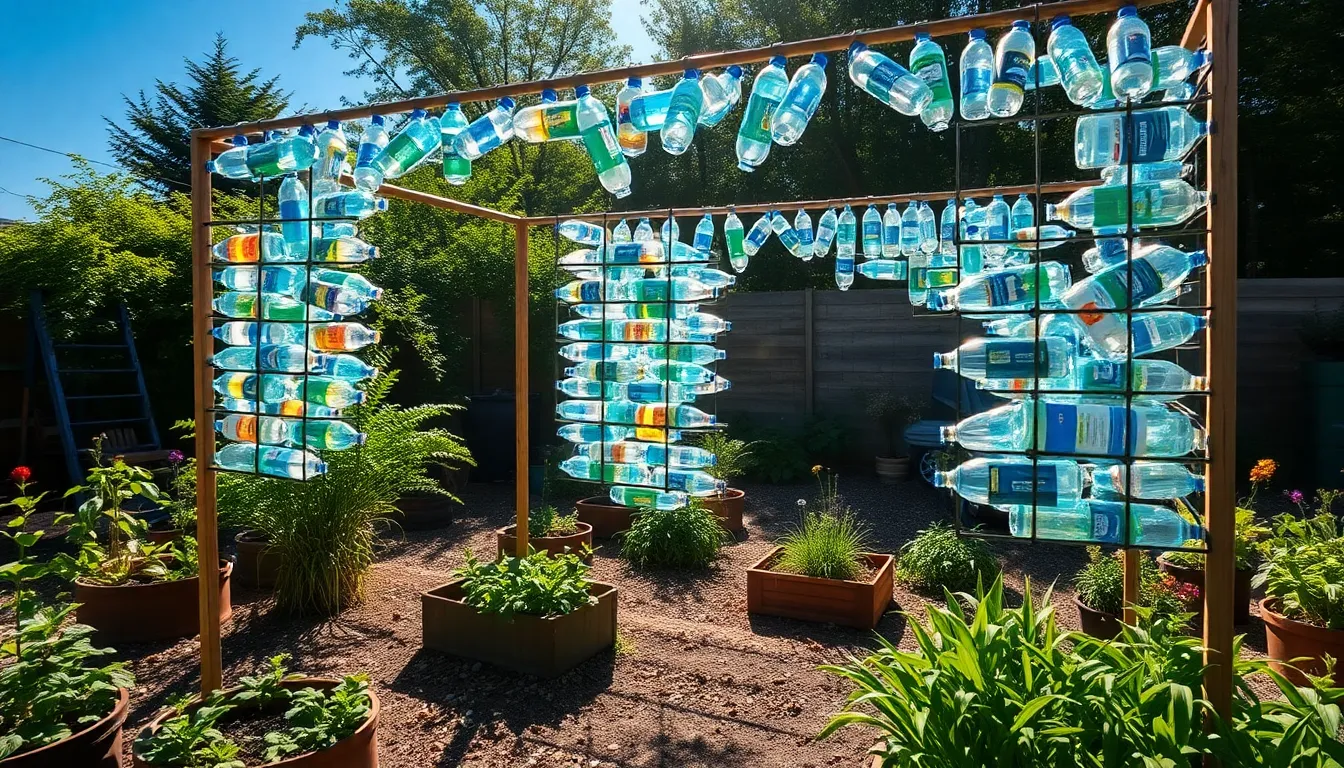
Building custom windbreaks allows us to transform everyday materials into effective garden protection while expressing our creativity. These hands-on projects combine functionality with personal style.
Recycled Material Wind Screens
Repurposed water bottles create surprisingly effective windbreaks when we attach them to sturdy frames. This environmentally friendly approach turns plastic waste into functional garden barriers while producing visually unique installations that spark conversation. We can arrange bottles in various patterns to create both solid and semi-permeable wind protection.
Gabion baskets offer another recycled solution using wire cages filled with rocks or reclaimed hardcore materials. These structures provide highly effective wind blocking while helping prevent soil erosion around garden beds. We fill the wire frameworks with locally sourced stones, broken concrete, or other dense materials to create substantial barriers that improve with age.
Woven Branch Windbreaks
Woven branches form natural windbreaks that provide rustic charm while protecting our plants from harsh winds. We gather flexible branches like willow, hazel, or young birch to weave between vertical posts, creating organic barriers that blend seamlessly with garden landscapes. This traditional technique produces biodegradable windbreaks that decompose naturally over time.
Willow fence panels represent the most refined version of woven branch construction, using carefully selected willow branches woven into portable sections. These panels blend beautifully with any garden setting while providing reliable wind protection. We can purchase pre-made panels or create custom sizes to fit exact garden areas.
PVC Pipe Wind Barrier Systems
PVC pipe structures create versatile frameworks that we can customize for various windbreak applications. These durable systems use standard plumbing pipes connected with joints to form stable frames that support fabric, netting, or other covering materials. We design the framework size and shape to match our exact garden protection needs.
Framework covering options transform basic PVC structures into effective wind barriers through strategic material choices. Industry fabric provides breathable protection that reduces wind speed without creating turbulence, while clear vinyl sheeting offers weather protection for sensitive plants. We can easily change covering materials seasonally or replace damaged sections without rebuilding the entire structure.
Multi-Purpose Windbreak Garden Ideas
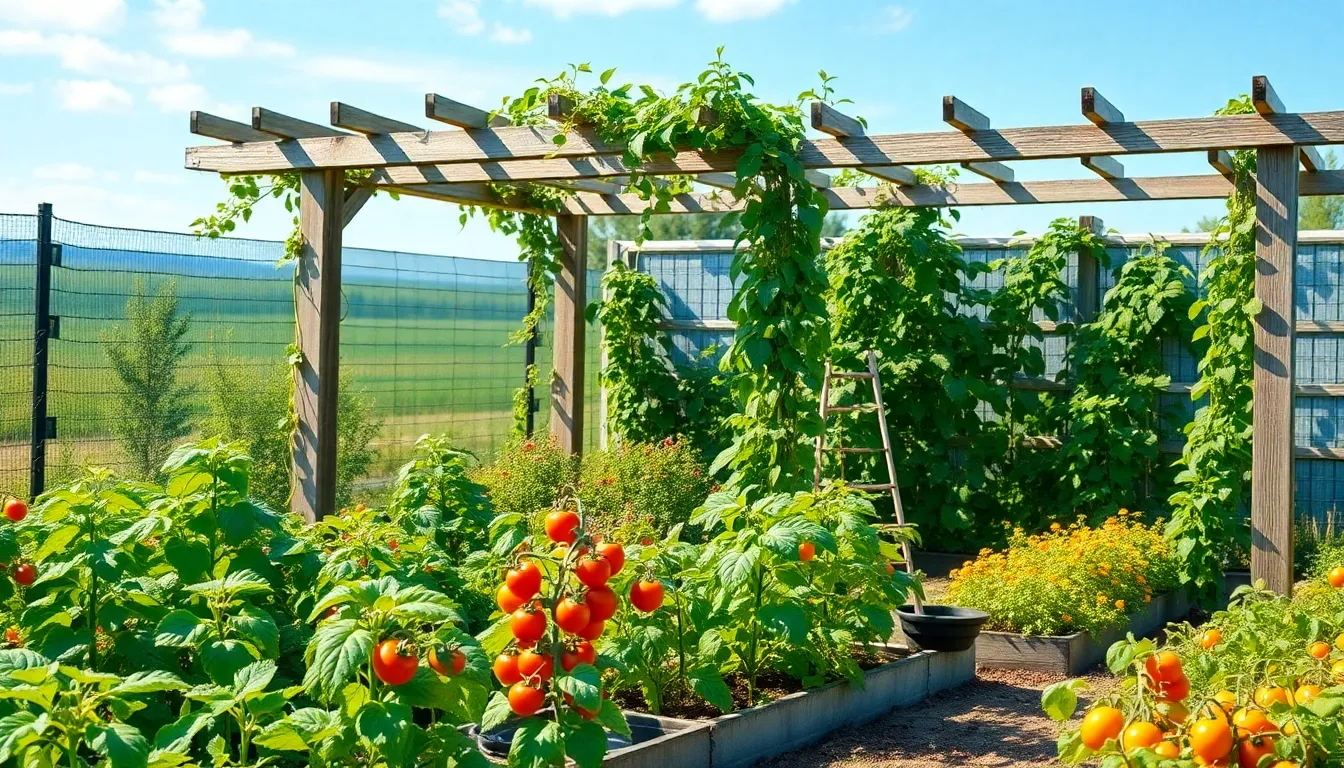
Smart windbreak answers can serve multiple functions in your garden while protecting your plants from harsh winds. We’ve discovered that combining wind protection with other garden features maximizes both space efficiency and visual appeal.
Vegetable Garden Wind Protection
Windbreak fencing creates the perfect balance between protection and airflow for vegetable gardens. We recommend installing permeable fencing materials that allow gentle air circulation while blocking damaging gusts. This approach prevents the stagnant air conditions that can lead to fungal diseases in tomatoes, peppers, and leafy greens.
Snow fence panels offer seasonal flexibility for protecting young vegetable seedlings during their most vulnerable growth stages. We’ve found these lightweight barriers particularly effective for spring plantings of beans, squash, and cucumber starts. The panels can be easily moved or stored when no longer needed, making them ideal for crop rotation systems.
Pergola structures double as both wind barriers and growing supports for climbing vegetables like peas, pole beans, and cucumbers. We position these vertical elements on the windward side of garden beds to create protected microclimates. The solid framework withstands strong winds while providing essential support for vining crops throughout the growing season.
Herb Garden Windbreak Walls
Decorative screens transform functional wind protection into attractive garden features while creating ideal growing conditions for delicate herbs. We use these stylish barriers to shield basil, cilantro, and parsley from drying winds that can cause leaf damage and premature bolting. The screens also provide an elegant backdrop that highlights the varied textures and colors of herb plantings.
Repurposed pallet walls create rustic windbreaks that perfectly complement herb garden aesthetics. We’ve successfully used old wooden pallets to construct effective barriers that protect mint, oregano, and thyme from harsh weather conditions. These upcycled structures can be easily modified with additional shelving for potted herbs or tool storage.
Willow fence panels blend seamlessly into herb garden designs while providing biodegradable wind protection. We appreciate how these natural barriers complement the organic growing methods typically used in herb cultivation. The panels gradually weather and decompose, enriching the soil while maintaining their protective function for several growing seasons.
Flower Bed Wind Barriers
Extension fence panels provide quick deployment protection for flower beds during unexpected weather events. We keep these portable barriers on hand to shield newly planted annuals like impatiens, petunias, and begonias from damaging spring winds. The panels can be rapidly installed and removed as weather conditions change throughout the growing season.
Bamboo screens create natural looking windbreaks that enhance rather than detract from flower garden beauty. We position these sustainable barriers to protect delicate blooms like delphiniums, hollyhocks, and tall cosmos from wind damage. The warm bamboo tones complement most flower color schemes while providing reliable wind reduction.
Arbour seating areas combine wind protection with functional garden spaces where we can enjoy our flower displays. We design these structures with solid or partially enclosed sides that block prevailing winds while creating intimate garden rooms. The protected environment allows us to grow wind sensitive flowers like dahlias and gladioli that might otherwise struggle in exposed locations.
Seasonal Windbreak Installation Tips
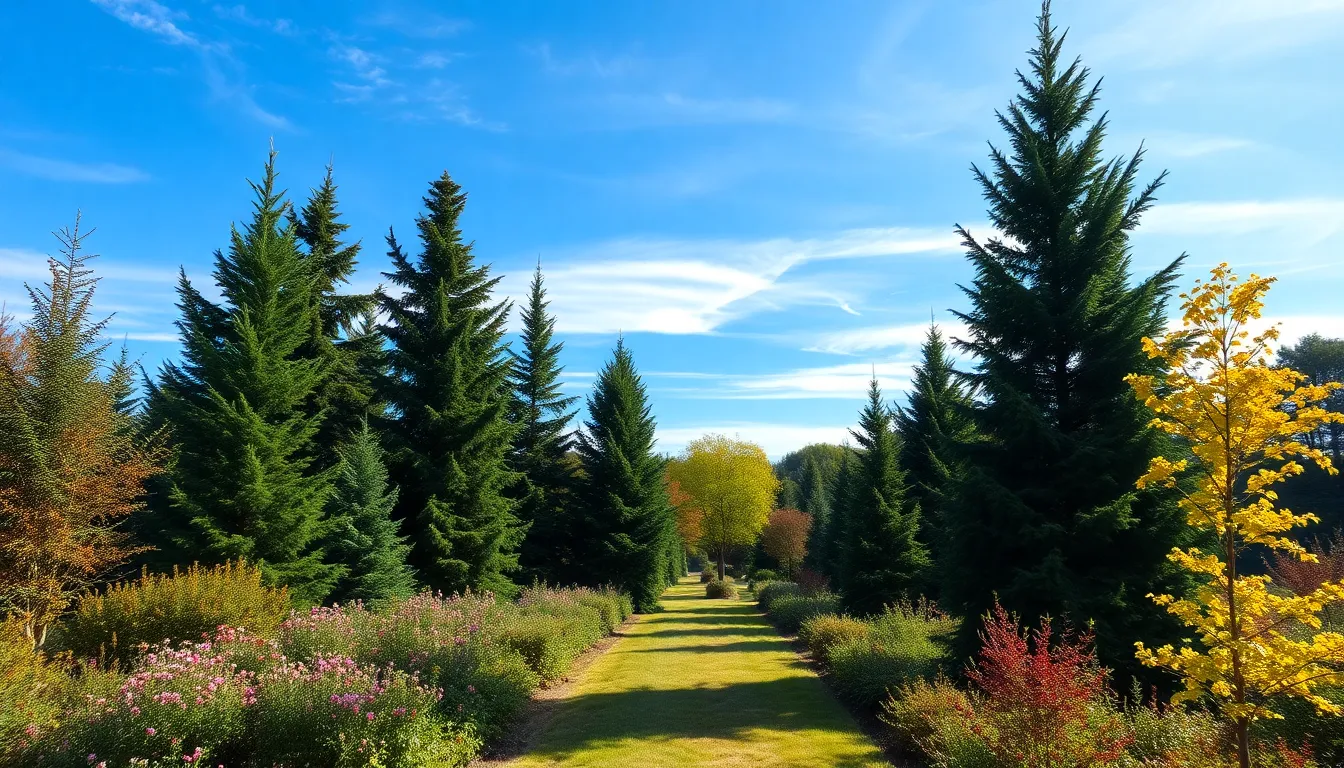
Timing your windbreak installation correctly ensures maximum plant establishment and effectiveness throughout the year. We’ll explore the optimal approaches for each season to create robust wind protection systems.
Spring Planting Windbreak Strategies
Strategic plant selection forms the foundation of effective spring windbreak installation. We recommend combining conifers with deciduous trees to achieve year-round density while adding seasonal visual interest to your garden industry.
Proper spacing techniques maximize windbreak coverage and plant health. Plant individual trees at least 14 feet apart and create multiple rows with 10-15 feet between each row. Stagger your plantings in alternating patterns to eliminate gaps that could compromise wind protection.
Climate appropriate species ensure long-term windbreak success. Choose trees and shrubs that thrive in your exact hardiness zone and match your desired growth rate expectations. Fast-growing options like hybrid poplars establish quickly, while slower-growing evergreens provide permanent structure.
Soil preparation timing takes advantage of spring’s optimal growing conditions. We suggest preparing planting sites when soil temperatures reach 50°F and frost danger passes. This timing allows root systems to establish before summer heat stress occurs.
Winter Wind Protection Methods
Dense evergreen placement creates the most effective cold weather barriers. Position these trees and shrubs on your property’s windward side to intercept harsh winter winds and create protected microclimates for tender plants.
Snow management systems prevent damaging drifts while utilizing snow’s insulating properties. Multi-stemmed shrubs and dense conifers in outer rows trap snow effectively, creating natural insulation barriers that protect underlying plantings.
Strategic positioning blocks prevailing winter winds that typically arrive from northwestern directions. We recommend installing windbreaks perpendicular to these dominant wind patterns to maximize their protective effectiveness.
Immediate protection answers safeguard newly planted windbreaks during their first winter. Burlap wraps, temporary screens, and mulch applications protect young plants until they develop sufficient size for self-protection.
Year-Round Maintenance Approaches
Regular pruning schedules maintain windbreak density and structural integrity. We perform annual inspections to remove dead branches, shape growth patterns, and ensure plants continue providing effective wind protection as they mature.
Mulching practices support healthy windbreak growth throughout all seasons. Apply 3-4 inches of organic mulch around plant bases to retain soil moisture, suppress competing weeds, and protect root systems from temperature extremes.
Systematic inspections identify and address windbreak gaps before they compromise protection. We check for storm damage, pest issues, and plant health problems during spring and fall maintenance windows.
Replacement planning ensures continuous windbreak effectiveness over time. Monitor aging plants and establish replacement schedules to maintain protective barriers as older specimens decline or require removal.
Cost-Effective Windbreak Solutions
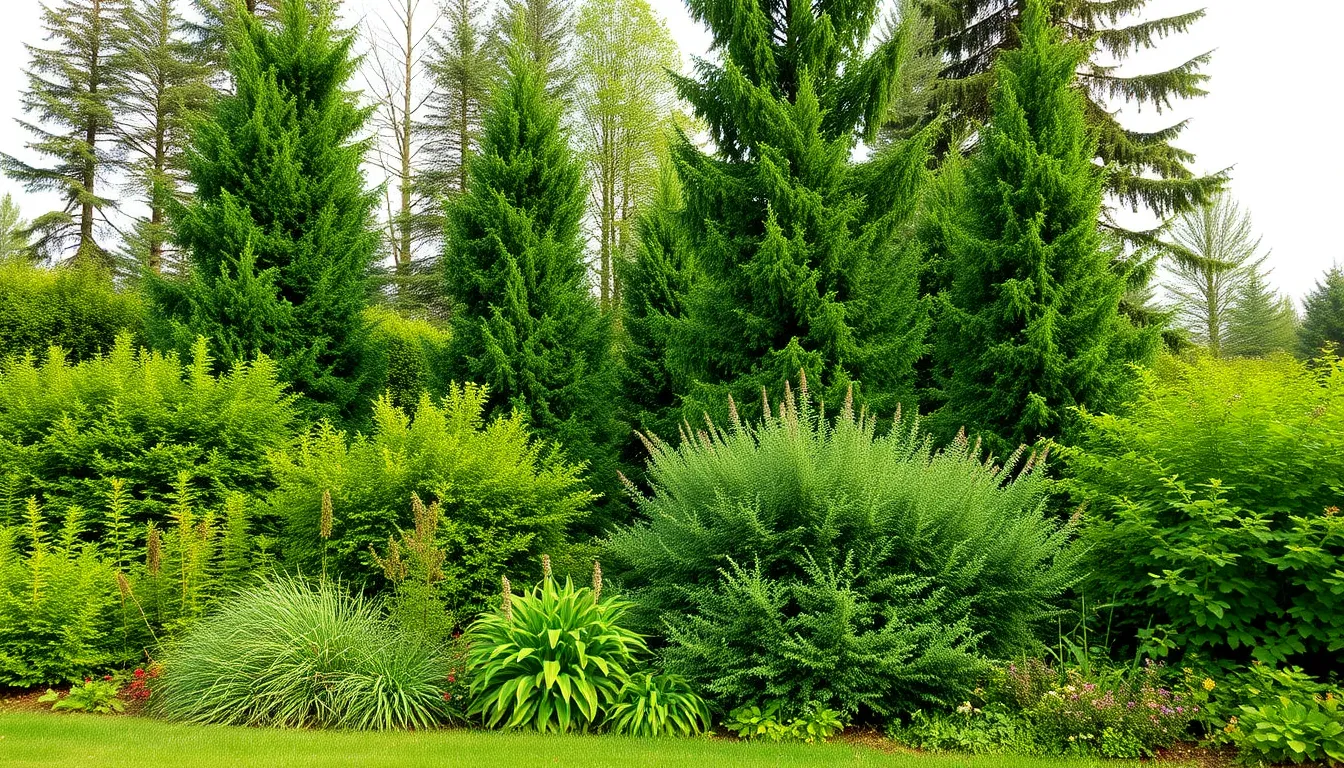
Smart gardeners understand that effective wind protection doesn’t require very costly. We’ll explore several budget-conscious approaches that deliver maximum protection while keeping costs manageable.
Budget-Friendly Natural Options
Native plants offer the most economical windbreak solution since they’re naturally adapted to local growing conditions. We recommend researching indigenous species in your area, as they typically require less water, fertilizer, and pest control treatments compared to exotic alternatives.
Dense evergreen shrubs like junipers or spruces provide excellent wind protection at significantly lower costs than mature trees. These compact options establish quickly and create effective barriers without the expense of larger specimens.
Multiple row plantings using different species prevent disease and pest issues while maximizing your investment. We suggest combining deciduous trees with shrubs to create layered protection that supports local wildlife and reduces long-term replacement costs.
Low-Maintenance Wind Barriers
Single row windbreaks work perfectly for limited spaces and busy gardeners who want effective protection without extensive upkeep. Densely planted evergreen trees or shrubs require minimal pruning once established and provide consistent year-round coverage.
Curved or angled designs eliminate the need for precise straight-line installations while creating visually appealing barriers. These flexible layouts accommodate natural terrain variations and reduce the labor costs associated with extensive site preparation.
Self-sustaining plant combinations that include nitrogen-fixing species help maintain soil health naturally. We recommend incorporating plants that support each other’s growth, reducing fertilizer needs and maintenance requirements over time.
Long-Term Investment Windbreaks
Species diversity ensures your windbreak investment remains productive for decades by reducing disease and pest vulnerability. Planting various tree and shrub species creates a resilient barrier that withstands environmental challenges and climate fluctuations.
Tall deciduous trees combined with evergreen understory plants maximize protection value while providing additional benefits like wildlife habitat and seasonal interest. These mixed plantings offer superior wind reduction and create microclimates that benefit surrounding garden areas.
Strategic spacing allows plants room to mature without overcrowding, ensuring each specimen reaches its full protective potential. We suggest planning for 10-20 year growth patterns to avoid costly removal or relocation projects as your windbreak matures.
Conclusion
Creating effective windbreaks transforms our gardens into thriving protected spaces that withstand nature’s challenges. We’ve explored answers ranging from budget-friendly native plantings to sophisticated structural barriers that suit every garden size and maintenance preference.
The key lies in matching our windbreak choice to our exact needs whether we’re protecting delicate seedlings or creating year-round privacy screens. From fast-growing hedges to creative DIY projects using recycled materials we have countless options to enhance our outdoor spaces.
Remember that successful windbreaks combine functionality with beauty while considering our long-term garden goals. Start with what fits our current budget and space then expand our wind protection system as our gardens mature and our needs evolve.
Frequently Asked Questions
What are windbreaks and why do gardens need them?
Windbreaks are barriers that protect plants from strong winds, creating calm microclimates in your garden. They prevent wind damage to delicate plants, reduce soil erosion, and make outdoor spaces more comfortable and enjoyable. Strategic windbreaks can transform harsh, windy areas into thriving garden environments.
What are the best natural windbreak options for gardens?
Evergreen hedges like Arborvitae and Leyland cypress provide year-round protection, while fast-growing deciduous trees like willows and poplars offer seasonal barriers. Mixed shrub plantings create layered protection, and native species require less maintenance while supporting local wildlife and providing effective wind defense.
Can I create temporary windbreaks for new gardens?
Yes, temporary solutions are perfect for new gardens. Burlap screens offer biodegradable protection, portable fabric barriers provide targeted coverage, and bamboo roll windbreaks combine durability with eco-friendliness. These options are ideal for rental properties or while permanent windbreaks establish themselves.
What permanent structural windbreak options are available?
Wooden fence windbreaks using cedar or redwood with board-on-board designs eliminate gaps effectively. Stone walls provide unmatched durability and wind-blocking power. Trellis and screen combinations create porous windbreaks that reduce wind speed while maintaining airflow throughout your garden space.
How can I make DIY windbreaks from recycled materials?
Transform everyday materials into effective windbreaks using recycled water bottles, gabion baskets filled with rocks, or woven branch barriers from flexible willow and hazel. PVC pipe frameworks offer versatile, customizable systems that can accommodate seasonal covering materials for year-round protection.
When is the best time to install windbreaks?
Spring is ideal for planting living windbreaks, allowing maximum establishment time. Combine conifers and deciduous trees for year-round coverage. Winter installation focuses on dense evergreen placement and snow management systems. Proper timing ensures better plant survival and faster windbreak effectiveness.
Are windbreaks expensive to install and maintain?
Effective windbreaks don’t have to be costly. Native plants require less maintenance and provide excellent protection. Dense evergreen shrubs like junipers establish quickly and cost-effectively. Single-row windbreaks and flexible designs reduce installation costs while maintaining effectiveness for long-term garden protection.
How do I choose windbreaks for specific garden types?
For vegetable gardens, use permeable materials that allow airflow while blocking damaging gusts. Herb gardens benefit from decorative screens and repurposed pallet walls. Flower beds need extension fence panels or bamboo screens for quick deployment. Match windbreak style to your garden’s specific needs and aesthetic.





